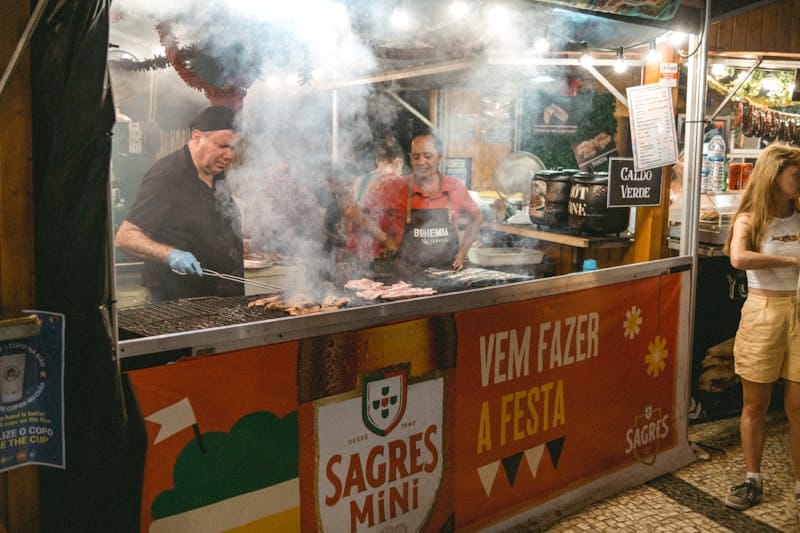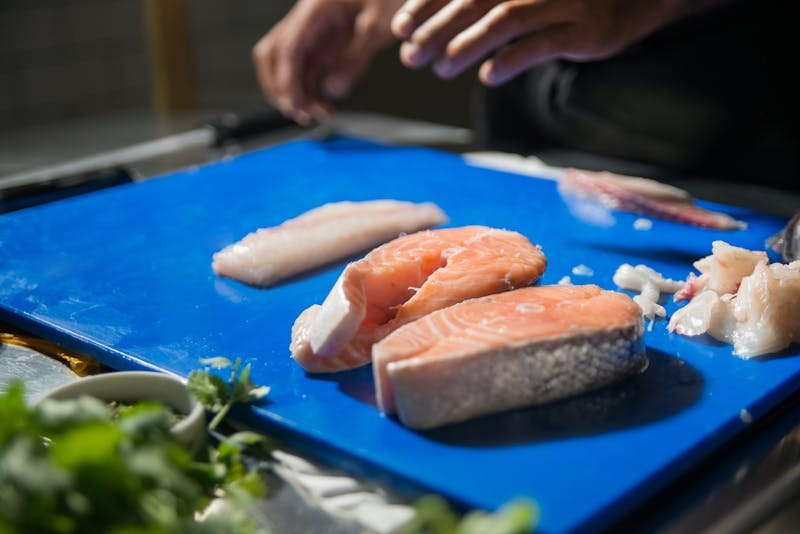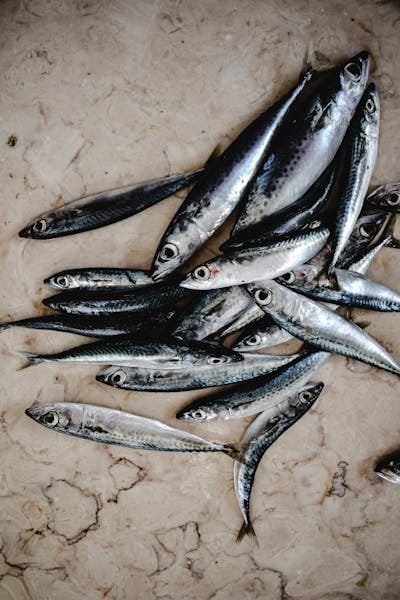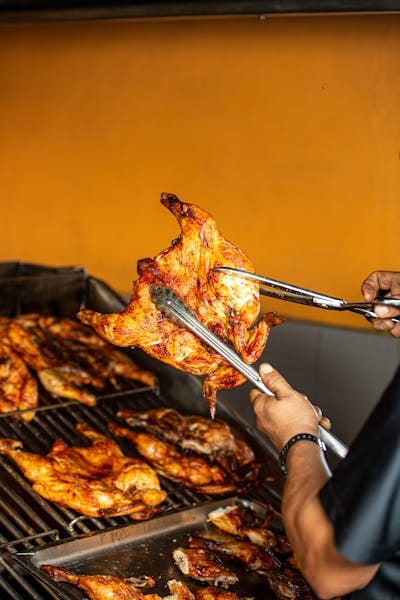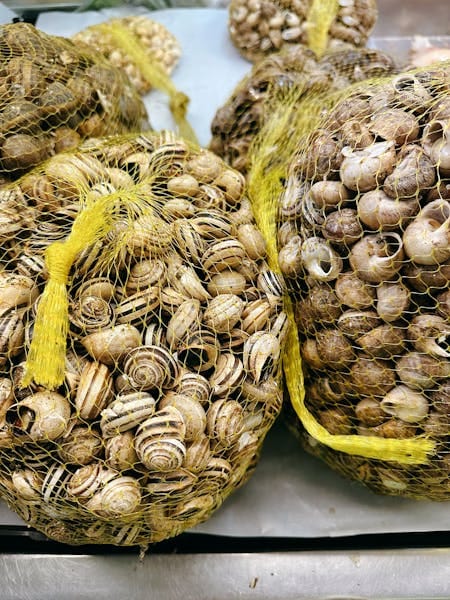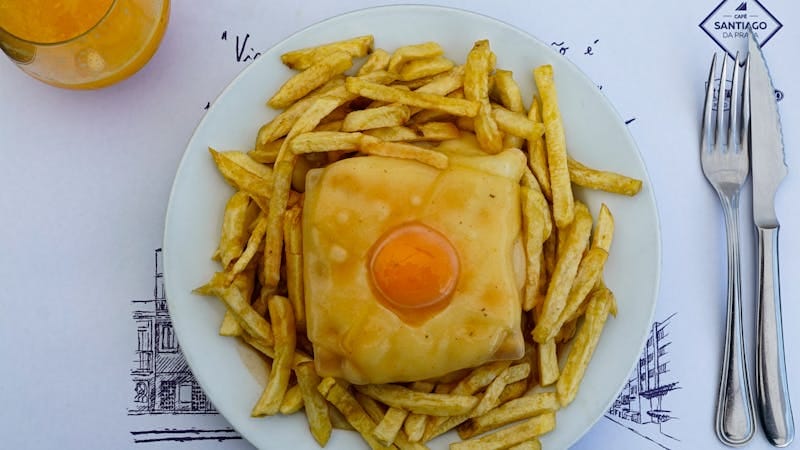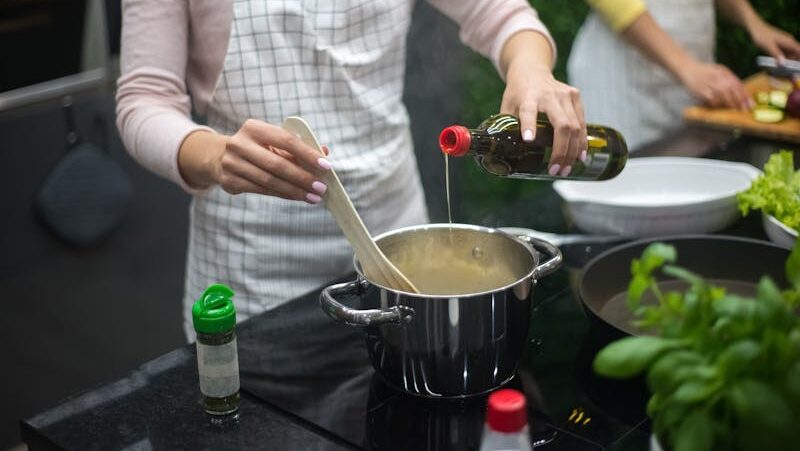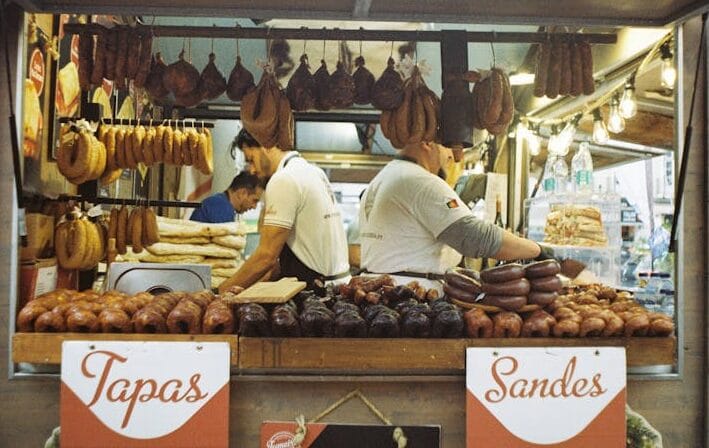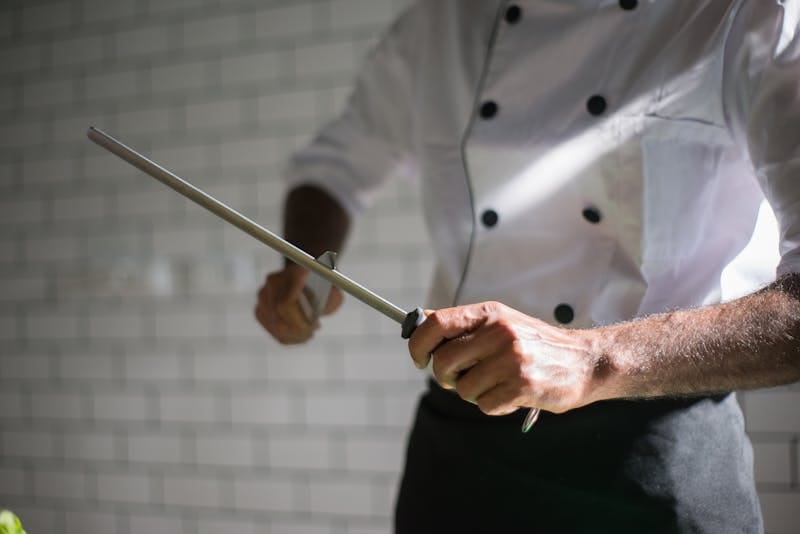What Do Portuguese People Eat? – Discovering Portugal Part 1
Taste Atlas considered Portuguese cuisine the 5th best in the world by Taste Atlas in the 2024/25 season. It is known for its hearty dishes and sweet treats with rich flavors. It includes seafood, meat, fresh fruits and vegetables, herbs and spices, and olive oil, considered the Mediterranean liquid gold.
With so many delicious dishes, Portuguese food offers something for every palate. In fact, one of the aspects that most resonates with tourists visiting the country is the rich food culture. Still, with so many tourists wanting to try the most iconic national dishes, few dive into the local culture.
But what do the Portuguese eat every day? What are the dishes they most prepare at home? And which are the recipes you can take home with you? Discover all that and more in this post!
This is part one of a three-part article series about Portuguese food and wine. Stay tuned to discover a side of the country you have not seen yet!
An Introduction to Portuguese Cuisine
Portuguese cooking is a unique blend of the Mediterranean diet, seafood, and international cuisine. It emphasizes fresh ingredients and traditional recipes. As such, it reflects the country’s rich history and diverse cultural influences. The history of exploration and colonization has influenced the local culinary scene.
The Mediterranean climate provides incredible fresh ingredients that shape local cooking styles. You will find hearty dishes, delicate seafood preparations, and sweet pastries. Additionally, many regional specialties showcase the local culinary diversity. Each area has its distinctive flavors and traditional recipes.
Learning Portuguese is one of the best ways to dive into the local culture. It allows you to communicate with the natives and learn the best food tips from those who know best. Does it sound like something you would like to do?
Discover your way to Portuguese fluency with The Journey. This unique European Portuguese course takes on an adventure throughout Portugal and introduces you to its people. Click HERE to learn more!
Below, explore more about Portuguese cooking. Learn about everyday dishes you will not want to miss when you visit Portugal. Plus, dive deeper into the local food culture to discover all about the Portuguese culinary scene.
Culinary History
Portuguese culinary history is long and complex, with many influences from other cultures. Over the centuries, new ingredients and cooking techniques were introduced into the country. For example, the Portuguese Discoveries Era brought spices like pepper, ginger, cardamom, cinnamon, clove, and nutmeg.
Learning about local history is an incredible way to explore the culture. It will make your trip more interesting and shine a new light on Portuguese traditions. For example, did you know Pastéis de Nata
Seasonal Ingredients
Portuguese food reflects the principles of the Mediterranean diet. Most dishes are made with seasonal, fresh, and locally sourced ingredients. With over 800 kilometers of ocean shore, the local cuisine includes a wide variety of fresh fish and seafood.
It also uses lots of fruits and vegetables, some meat, and generous amounts of olive oil. Then, there is the famous bacalhau, or salted cod, which is desalted before being cooked. Many dishes include cured sausages and hams, which are traditional in Portuguese cooking.
Everyday Portuguese Dishes
Most tourists learn about iconic dishes like Bacalhau à Brás
Still, you will not find them so often in Portuguese tables. How so? Like any other country, the Portuguese do not always eat the famous dishes tourists crave. To get the true Portuguese experience, you must learn about the local comfort foods and the quick meals. For example, how would you feel about a delicious bifana
Explore the common Portuguese foods the natives love!
Seafood Dishes
Seafood is a significant part of Portuguese cooking. The most popular dishes include the famous Arroz de marisco
Grilled Sardines
Sardines in Portugal are commonly served grilled. Also called Sardinhas Assadas
The skin blisters and crisps while the inside remains juicy and flavorful. Sardines often come with boiled potatoes, grilled peppers, or a slice of Portuguese bread. The smoky aroma and rich taste reflect the essence of traditional Portuguese street food.
Xarém De Conquilhas
Xarém de Conquilhas
The Conquilhas
Xarém
Petingas Fritas Com Arroz de Tomate
Petingas
The dish is often served with tomato rice, which is rich, tangy, and aromatic. The rice has garlic, onions, ripe tomatoes, and a bay leaf. The crispy sardines and saucy rice create a satisfying, home-style Portuguese meal.
Bacalhau Com Natas
No list of Portuguese seafood dishes would be complete without codfish. Bacalhau com Natas
Less famous than Bacalhau à brás
Peixe assado
One dish you can find in almost all Portuguese homes is roasted fish. Peixe Assado à Portuguesa
The fish is seasoned with olive oil, garlic, onions, and fresh herbs like parsley. Alongside it, the natives usually add sliced potatoes, bell peppers, and sometimes tomatoes. The ingredients cook together, creating a rich, savory sauce full of natural flavors. This dish is simple but elegant, highlighting the freshness of the fish. It pairs perfectly with a glass of crisp white wine.
Meat Dishes
Meat is a staple in the Portuguese diet, cooked according to local traditions. You will come across meaty soups, like the comforting Caldo verde

Credit – https://www.teleculinaria.pt/receitas/carnes/receita-de-carne-de-porco-a-alentejana/
Bitoque
Bitoque
This dish is hearty and satisfying. You will not find it in most posh Portuguese restaurants, but it will be common in local cafés
Arroz de Pato
Arroz de Pato
The result is a crisp, aromatic top and a moist, savory interior full of flavor. Some love to accompany it with slices of fresh orange. The natives love to serve this dish during family gatherings, holidays, and festive occasions. However, it is also an everyday favorite.
Frango Assado
Frango Assado
The locals often brush a sauce on it during cooking. You can usually choose between garlic, lemon, and olive oil or spicy piri piri sauce. This last sauce adds heat and tang, making it especially popular with spice lovers.
Frango Assado
Alheira Com Ovo
Alheira com Ovo
Thus, they made sausages without pork, using poultry, bread, and spices instead. This way, they could appear Christian and avoid persecution by the church. Though now made with various types of meat, the dish still honors its clever, resourceful origins. It is a powerful example of how cuisine can tell stories o identity and survival.
Today, alheira
Snails
At least one dish in this list should be something that would surprise you. Yes, the French are not the only ones eating snails. Many Southern European countries enjoy this unique delicacy, especially during the summer months.
Caracóis à Portuguesa
The result is a savory, herby dish served hot and eaten with toothpicks. Caracóis
Desserts
No good meal is over without an outstanding dessert, and Portugal has plenty. A bit of cured cheese on Portuguese bread helps to prepare the way for a delicious end-of-meal. Then, traditional Portuguese confectionery is made of all things good for you, including butter, eggs, cream, and lots of sugar.
The first sweet treat that pops into everyone’s mind when thinking about Portugal is the Pastel de nata

Credit – https://cozinhatecnica.com/2014/10/queijos-serra-da-estrela/
Arroz Doce
Arroz Doce
The dessert is usually topped with a dusting of cinnamon, often in decorative patterns. Its texture is smooth and comforting, with a delicate balance of sweetness and spice. Arroz Doce
Baba de Camelo
Baba de Camelo
Its name means Camel’s drool. Despite not seeming attractive, it refers to its rich consistency and golden color. Baba de Camelo
Bolo de Bolacha
Bolo de Bolacha
The result is a soft, rich dessert with a balance of sweetness and bitterness. Often topped with crushed biscuits or cocoa powder, it has a simple, elegant finish. Bolo de Bolacha
Serradura
Serradura
The cream often includes vanilla or condensed milk. Each layer is carefully built in a glass or dish and then chilled until firm. The contrast between the airy cream and the biscuit crumbs creates a satisfying texture.
Serradura
Tarte de Nata
Tarte de Nata
Once baked, the top develops a golden color and a delicate, slightly caramelized surface. Unlike the iconic Pastéis de Nata
Regional Specialties
Portugal has many regional specialties. Different areas of the country offer unique dishes and ingredients. The Algarve
For example, the Francesinha
More About Food Culture in Portugal
As you will have noticed by now, food is a crucial part of Portuguese identity. Mealtimes are a time to socialize and share happy moments with family and friends. Traditional Portuguese cuisine is the central point of family gatherings and special occasions.
As a visitor, tasting local food is one of the best ways to experience the culture. Tasting local dishes will teach you about the ingredients of each region and its traditional cooking methods. In many cases, it will also give you an insight into local history.
Local Drinks
Portugal has a wide variety of drinks that match its rich food culture. You will find everything from light, bubbly Vinho Verde
Local soft drinks like Sumol
Food-Related Events and Activities
Food-related events and activities are a crucial part of the local culture in Portugal. The best way to enjoy these events is by exploring the local language. After all, knowing how to communicate with the locals will open the door to incredible experiences.
The Journey is a European Portuguese course you will love! It is an adventure based on science-proven methods to help you reach fluency instinctively while having fun. Click the button below to learn more!
Learn European Portuguese the Instinctive Way!
For the last decade, we’ve been working on putting together the best possible European Portuguese course. After much research, feedback from our students, and several iterations, we think we’ve got it! 😉
At the base of it all is a sound conviction that languages are better learned instinctively, so the process needs to be engaging, varied, and enjoyable. Throughout, we used scientifically proven techniques to help you master pronunciation, phrase construction, oral understanding, grammar, and all the necessary bits to get you to fluency. And still, the whole thing is presented as an adventure. It’s a course like no other. Click the button below to see for yourself!
Cooking Classes
The second best thing to tasting delicious food is learning how to make it. Cooking classes are a great way to learn about Portuguese cuisine and try your hand at cooking local dishes. It is a fun activity that will make your time in Portugal more memorable.
You can book a culinary experience with a native. It usually includes a visit to the local market and a get-together to cook a regional dish. Otherwise, you can also befriend a native and ask them if they would be willing to teach you their favorite dish.
Food Festivals
There are dozens of food festivals and fairs in Portugal every year. Food festivals are a popular event everywhere in the country, with most municipalities hosting festivals throughout the year. These events often feature traditional foods, live music, and local products.
Inform yourself about which festivals will happen at the time and place of your visit. Then, in most cases, you only have to show up and enjoy. However, some of the most famous festivals require a ticket that might be free or paid. For example, the Óbidos Chocolate Festival is free, but you must book your ticket.
Attending these festivals is a great way to experience the local food culture. There, you can try new dishes and drinks and meet regional producers. Sometimes, you can also meet famous chefs and watch them cook live.
Food Tours and Travel
Food tours are another incredible activity to learn more about the local traditions while visiting Portugal. Companies and individuals offer different types of tours focused on food and drinks. They often include visits to local markets, restaurants, and food shops.
During a tour, you taste traditional Portuguese dishes and beverages. But you learn more about their history and how to make them at home. For example, you can take a Green Wine tour in Northern Portugal to discover the vineyards and taste delicious wines.
Modern Portuguese Cuisine
Modern Portuguese food is a fusion of traditional and contemporary styles. The natives are creative by nature. Chefs incorporated new ingredients and techniques into their dishes. Especially in the big cities, they have developed an innovative atmosphere, creating the Portuguese version of many foreign dishes.
In the last few years, there has been a major increase in trendy restaurants and bars. This new wave of Portuguese gastronomy is not part of everyday living. However, it marks special occasions and brings a new take on tradition and flavor you will not want to miss.
Eat How Portuguese People Eat!
When visiting Portugal, you will discover many delicious dishes. Some come from centuries-old traditions, while others are contemporary recipes made with fresh ingredients. The country has a rich food culture. Thus, you will have more than enough occasions to taste local cuisine.
Still, you can not say you have had the real Portuguese experience until you have eaten like a native. The simplest yet most traditional dishes are still part of everyday Portuguese living. These are the recipes you must try. Learning about their history will give you incredible insight into the culture.
What is your favorite typical Portuguese dish? Share a food memory you treasure in the comments below!
Now that you know about the traditional dishes most beloved by natives, stay tuned for part two of this series. In it, explore the Portuguese wine regions, and learn about the variety of delicious wines that are produced in the country!
Plus, keep an eye on our YouTube channel! We are preparing a series of vlogs about Portugal to loop you in on the best foods of each region. You will learn Portuguese directly from us and the natives we interact with. Come with us to discover the most authentic side of the country!

